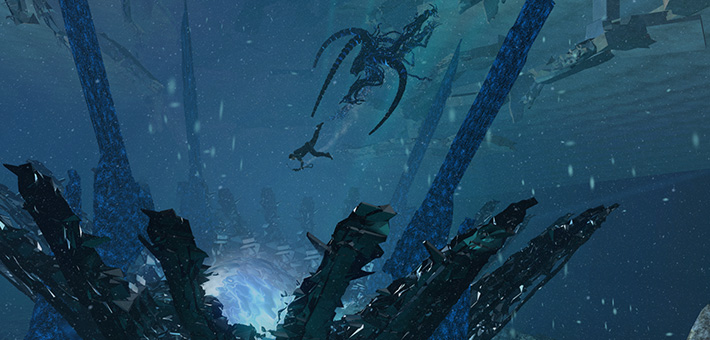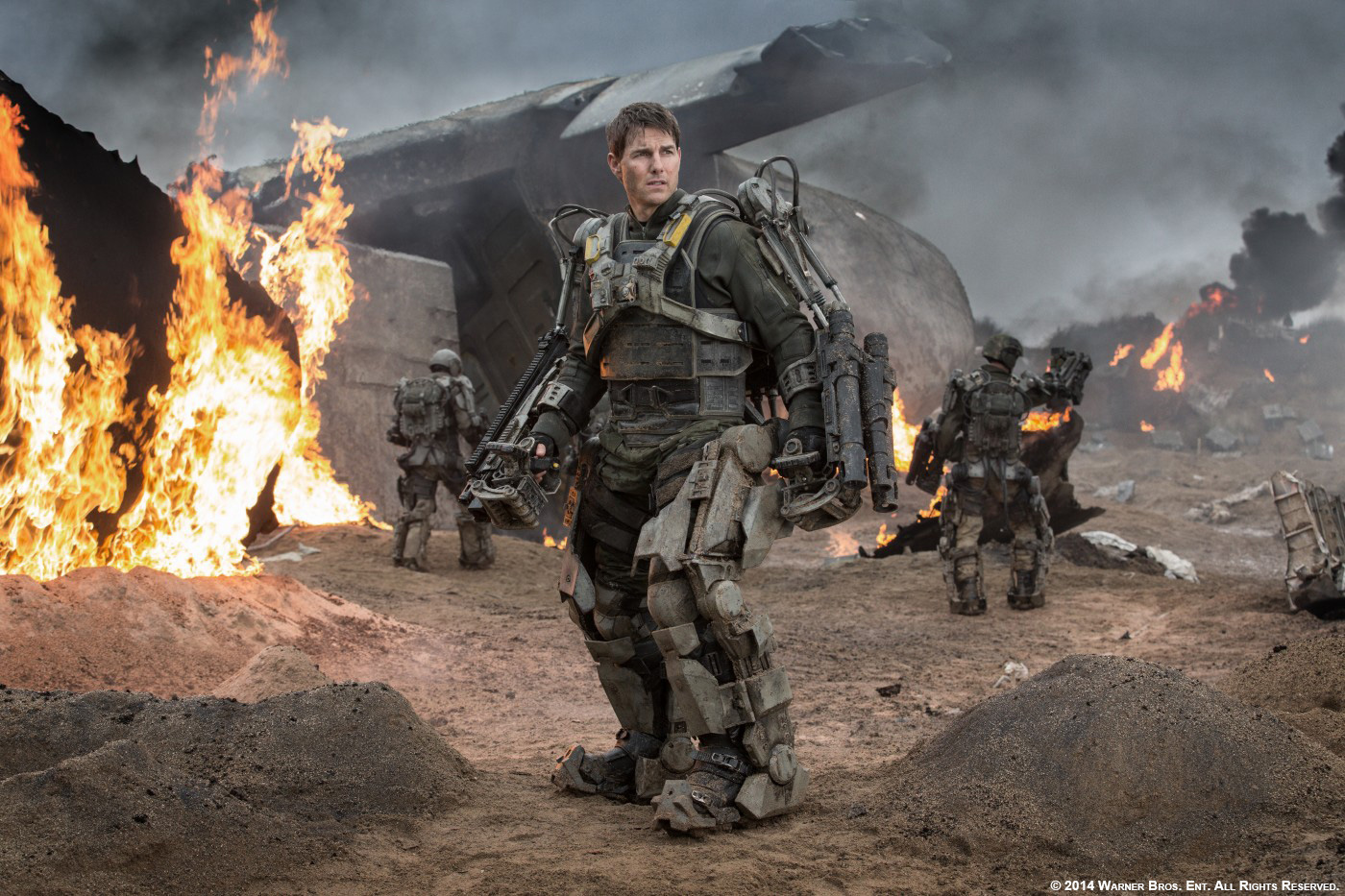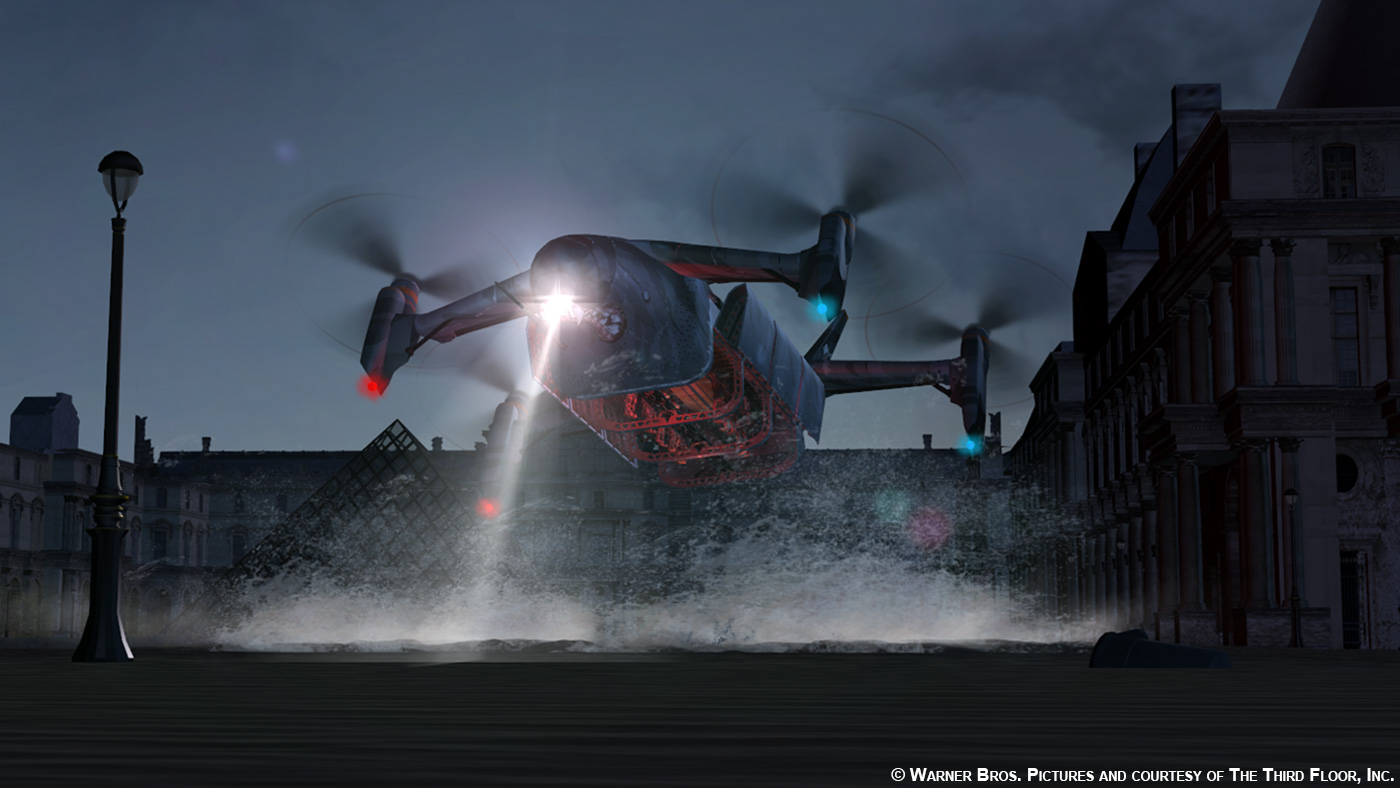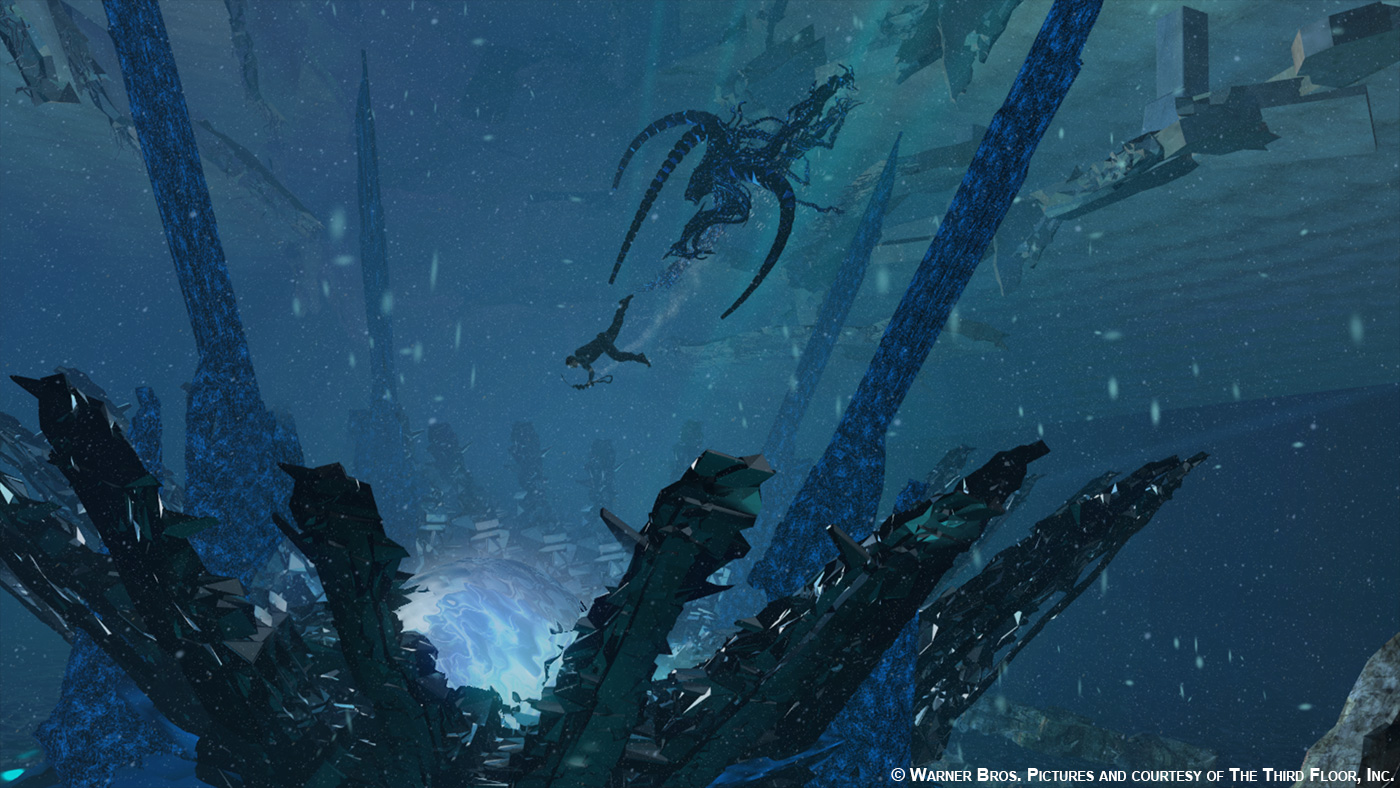Margaux Durand-Rival began her career in visual effects in 2008 at Sabotage Studio in Paris and then at Digital District. She worked on various commercials and music videos. In 2011, she joined The Third Floor in London and participated in previz many films like THE AMAZING SPIDER-MAN 2, MALEFICENT or EDGE OF TOMORROW.
What is your background?
I studied art and computer animation in France, and I graduated from Supinfocom Arles in 2008. After that, I worked for three years in Paris as a freelance animator and previs artist before I moved to London at the end of 2011 to work at the Third Floor’s UK studio as a previs artist. The studio had just opened, so I was one of the lucky starters.
How did you get involved on this show?
Nick Davis, visual effects supervisor for the film, came to The Third Floor London early in pre-production to discuss the project. The art department at Framestore was right next door to us and was already far along in creating a lot of the concept illustrations so that helped a lot. It was the first big project coming in to our new London studio and we were all very excited about the opportunity.
Can you describe the collaboration with director Doug Liman?
The director often used previs to try out different ideas and to see how things could play out visually and structurally. There were quite a few battle scenes to be planned, as well as all of the visual effects to support them. We interfaced regularly with Nick and would often work something up for presentation to the Doug and the rest of the creative team. Usually, this would generate feedback that we could then address in our next passes, or and we would also incorporate any new ideas that they wanted to explore.
What were his expectations for the previs?
The director wanted to be able to visualize all of the action sequences, especially those involving major CG elements like the Mimics. The goal was to resolve all the questions about their scale, movement, speed, etc. so everything could be properly shot.
What kind of direction did he give you?
He was very specific that he wanted as much as possible in camera rather than as CG camera moves; he wanted to be able to shoot everything we did in previs on set. He liked a handheld camera style to give the feeling of being on the battlefield, but he didn’t want the sequences to be too messy, so we had to find a good compromise.
How did you work with Production VFX Supervisor Nick Davis?
We worked really closely with Nick and he was very involved with the previs team right from the beginning. As the show had a lot of VFX, it was important to plan everything as much as possible, and we saw Nick pretty much everyday for a while. It was a great collaboration.
How was work organized at The Third Floor for this show?
We were involved from early pre-production and through most of post-production in previs, techvis, and extensive postvis. A lot of the work was done from The Third Floor’s London studio, with some additional work from the company’s office in L.A. The sizes of the team fluctuated over the course of the production depending on the shoot schedule, state of script, the working cut,and the various screenings along the way. We had a small team at first, supervised by Albert Cheng, but after a while we were working on several sequences at the same time, the team grew larger and I became a previs lead.
Can you describe one of your typical days?
We often had very busy days. Every artist needed to produce several shots a day, and we often had reviews, so in the morning we would look at our latest previs edit, make notes and then define priorities for the team. As everything moves pretty fast in the pre-production stage, we often received new concept art and storyboards and needed to incorporate those elements right away into the previs.
Did you receive storyboards from the production or did you start from scratch?
We started some of the sequences with storyboards, especially the early ones, but after a few months, we started some shots from scratch. Quite often you begin with storyboards and then the sequence starts to evolve and as you get more precise concept art or a real location, you need to adapt to this new information, which often means readjustment and improvisation from the storyboards.
What freedom did you have to suggest ideas and camera movements?
?We had quite a lot of freedom, as our director and VFX supervisor were both very open to suggestions. It’s always easier to see if the camera framing in the storyboard is going to work when you have an environment built and your characters in place in the previs scene. It is part of our job to analyze that and come up with suggestions we can try out very quickly and then show to the filmmakers.
What was the most complex sequence to design and animate in previs?
I think the most complicated sequence was the first sequence we did — the first day on the beach, starting from the dropship accident that leads to all of the J-Squad dropping in. It involved a lot of characters and choreography, and we eventually adapted the generic beach environment we were initially using to match the future outdoor set they were going to build on the backlot of Leavesden Studios. We worked closely with the art department on this, as they did a very precise model of the set. Once the new environment was set up, we planned every action in that particular model, with specific and various length and depth of trenches, to fit all of the characters fighting with Mimics in very tight space. It was a very nice sequence to work on, but definitely not an easy one!
How did you create the various characters, vehicles and environments for use in previs?
We worked very closely with the art department to make all our previs assets match their concept art and illustrations, especially all the work on the battle suit. We always use The Third Floor’s asset library, the Ark, to have some models to start with and these are replaced with specific assets if they are available. The Mimic model was a little more tricky, as the design was constantly evolving, so we had different models at different stages of the project.
Once the previs was approved, how did you work with the VFX teams?
Previs is often used to showcase sequences to visual effects vendors so they can accurately bid on the work. We can also provide packages of previs that can be used as a starting point to lay out and build final shots.
What did you like most about the previs?
I really liked the fact that it was a very creative project, and that the sequences were all quite different from each other, which made it very challenging and fun at the same time. As a previs artist, animating Tom Cruise killing aliens in an awesome armored suit was very exciting, and we also were able to contribute a lot of ideas for the Mimics’ animation, propositions and behavior.
When you look at the final result, is there a big difference between previs and final shots?
The VFX sequences and our previs match up pretty closely for most scenes, and it is easy to recognize our shots. We also did postvis on most of the sequences, integrating previs into plate photography very early in the post-production process to help editorial make decisions on the cut.
Was there a shot or a sequence that kept you up?
(Laughs) I was lucky to work with a very good supervisor who was very helpful. I had a few nights looking at my ceiling trying to figure out how to properly start on a new sequence or on a few complicated shots, but nothing kept me awake all night!
What will you take away from this experience?
Great memories, as most of the time we were on location at Leavesden Studios with all of the crew. It was great to be able to see the shoot and to collaborate very closely with all the departments. We had the opportunity to work on a lot of different aspects of the project, both creative and technical.
?How long did you work on the film?
I was on the film for almost a year, with previs and postvis. The Third Floor’s team was on the show continuously from April of 2011 all the way to late August 2013 with occasional short breaks over the course of production.
What was the size of the previs team?
The size of the crew depended on the planning and quantity of work. Sometimes the team had 5-7 artists and sometimes it was 15 or more.
What is your next project??
I can’t really talk about it yet, but it is a very exciting project as well!
A big thanks for your time.
// WANT TO KNOW MORE?
– The Third Floor: Official website of The Third Floor.
© Vincent Frei – The Art of VFX – 2014










